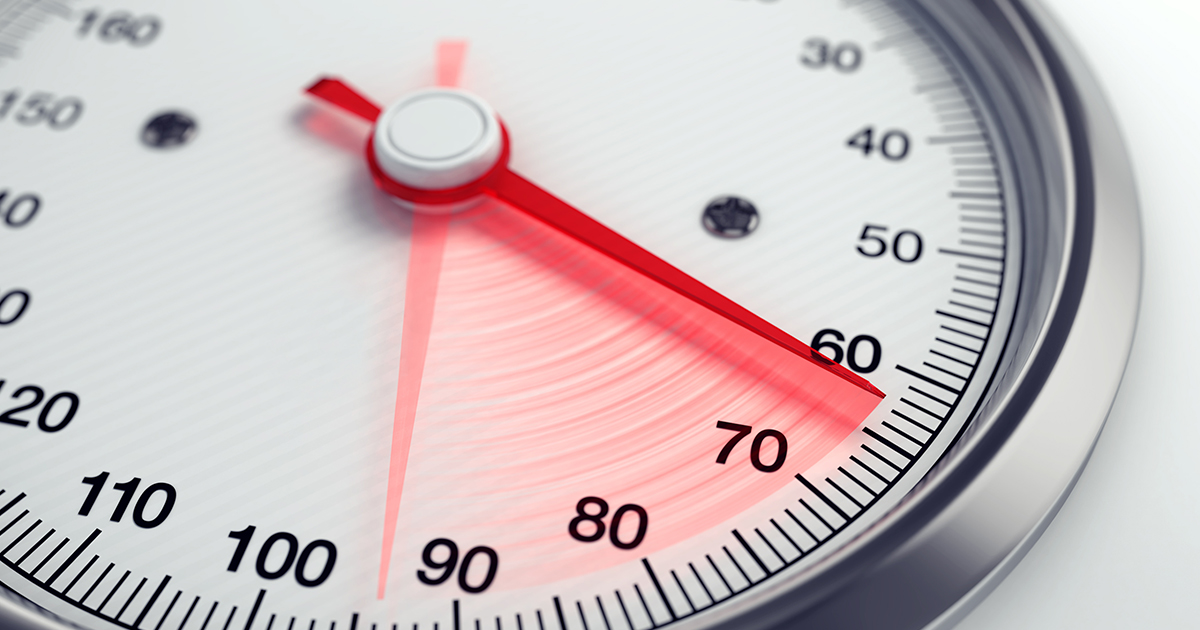
After you complete cancer treatment, you may be surprised to find that the numbers are creeping up on the scale. It happens perhaps more than you think. All too often after treatment, cancer patients slip back into unhealthy habits, especially when it comes to eating. “When patients are diagnosed, they’re suddenly hyper-aware of what they’re eating and drinking and, most of the time, want to do everything they can to be as healthy as possible,” says Crystal Langlois, Director of Nutrition at our hospital near Atlanta. “After treatment, though, they often feel like they’re off the hook and are excited to eat the unhealthier foods they didn’t feel they should eat during treatment. I think most patients are just happy to be finished with their treatments, so they tend to slide back into their old ways.”
That relapse may have a detrimental impact on the patient’s health. Research has found that those who are overweight or obese may be at an increased risk of diabetes, heart disease, stroke or cancer recurrence.
Taste bud changes
Many cancer patients have also experienced a noticeable and lasting change in their taste buds—a common side effect of certain cancer treatments that may compound attempts to rein in the waistline. Something tastes too salty or too sweet, for example, even if it’s made the same way it’s always been made. “I always encourage patients and caregivers to get creative with flavors and experiment with different seasonings until they find something they like,” Langlois says.
Others who have had hormone therapy may also discover that they can’t maintain a healthy weight like they used to. Hormone therapy is often used to treat cancer by decreasing the amounts of estrogen and progesterone in women and testosterone in men, depriving cancer cells of the hormones they need to grow. At the same time, though, this may also lead to increased fat, decreased muscle and a lower metabolism. Those who were prescribed steroid medications to treat symptoms of inflammation, nausea or the cancer itself may have experienced a lasting buildup of fatty tissue and an increase in appetite. In each of these cases, Langlois says, eating more nutritious options may make a difference. “I’ll tell my patients that it’s OK if they want to occasionally eat something that may not be the healthiest, but I also challenge them to try a lean turkey or chicken burger instead of eating a traditional hamburger that may be high in calories and saturated fat,” she says.
Getting back to a healthy weight comes down to two familiar essentials: diet and exercise. But first, Langlois says, it’s important to target the cause of the weight gain to combat it. If, for example, you are resorting to rich comfort foods to accommodate your altered taste buds, a registered dietitian may help you find healthier, flavorful foods that are good for your palate and your waistline. Or, if hormone therapy treatments have slowed your metabolism, your dietitian may suggest foods that are lower in calories but rich in nutrients.
Langlois recommends talking to health care professionals before starting a diet, changing your eating habits or beginning an exercise regimen. They may be able to suggest exercises that are better for you than others or certain food choices that may help with vitamin or nutrient deficits. Your dietitian also may recommend limiting the amount of salt in your diet if your body is retaining fluid because of prior treatments.
Eating more fruits and veggies
Langlois also recommends finding ways to incorporate nutrient-rich fruits and vegetables into your diet. A few options include:
- Add finely chopped mushrooms to ground turkey or ground beef (burgers, meatloaf).
- Add grated apple or pear to ground chicken burgers.
- Puree cauliflower and add to macaroni and cheese, mashed potatoes, pot pies and casseroles.
- Use spaghetti squash in place of pasta.
- Add vegetables such as kale, spinach, broccoli or carrots to smoothies.
- Add fruits such as berries, pineapples, oranges, bananas, mangos or pears to smoothies.
- Make fruit salsa with strawberries, kiwis and Granny Smith apples.
“Fruits and vegetables are a great source of fiber, they have very few calories, and they fill you up so you feel full faster and eat less,” Langlois says.



